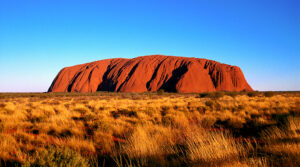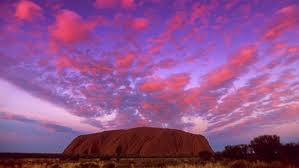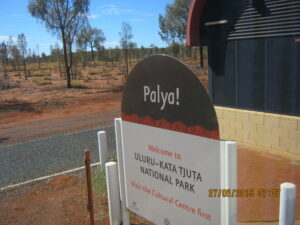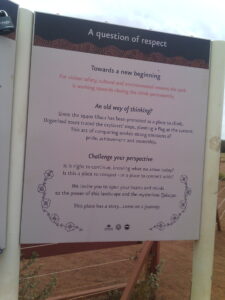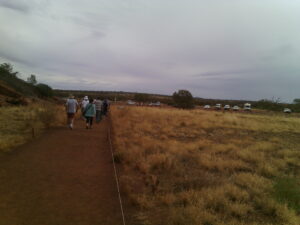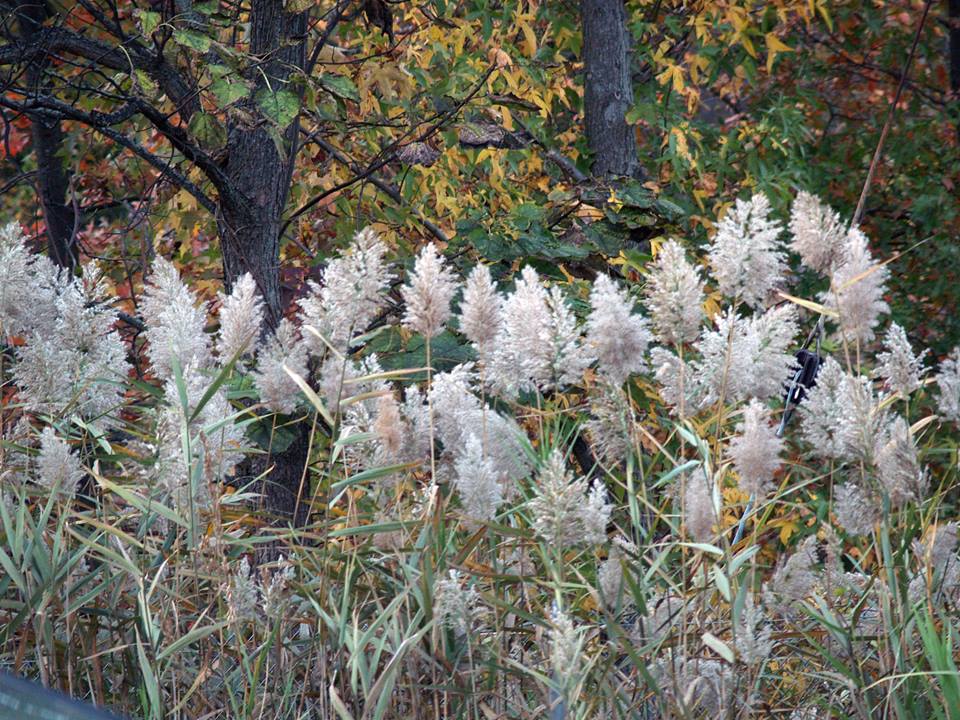In front of Uluru
Want to immerse yourself in the magic of the Australian outback? Take a trip to Uluru.
The final leg of our journey to Uluru began. As we travelled about 50km, we came across Mt Conner. Mt Conner is often mistaken for Uluru by unsuspecting tourists. When I saw Mt Conner, I could at once make out why this formation fools many people.
Mt Conner is a flat-topped hillock that is about 2821ft high, and like Uluru, is a sacred site for Yankunytjatjara people. It is located on Curtin Springs Station, and the best way to see it is to book a tour at Curtin Springs. Our bus stopped for 15 minutes. I hurriedly got off the bus to take a look as the sun was shining weakly through a cloud cover.
The driver of the bus was in no mood to waste time as it was already 3pm and we were still some distance away from our destination. We all hurried back to the bus and the bus zoomed through the desert.
After about half an hour, we finally reached the spot for which we all had been waiting since morning. What I saw blew my mind: a spectacular gargantuan sandstone monolith emerging from the breathtaking desert. 348 metres in height and the base of the rock formation covers an area of 9.4km.
As my eyes travelled over the rock formation, I paused for a moment and tried to absorb its grandeur and majestic beauty. The air was crisp, the light muted. Soon the sun burst through the clouds. As I was trying to delve into Nature’s impenetrable mystery, I thanked the almighty for giving me an opportunity to witness this marvel. I stood transfixed and kept savoring its magnificence and grandeur.
After seeing Grand Canyon, Theodore Roosevelt once said that “it’s one great sight which every American should see.” I had been to Grand Canyon in Arizona and was fortunate to watch the stunning Niagra Falls in Buffalo in upstate New York. Uluru in the central Australia is yet another once-in-a-lifetime experience.
Wonderstruck, I soaked in Nature’s infinite energy of creation. I pondered over how the giant rock survived the intense heat of the sun and the ravages of storm over the centuries. I marveled at its majestic beauty as the rock changed its color with the change in sunlight. The apparent color changes result from the effects of the earth’s atmosphere on the sun’s incoming rays.
It was 5 pm and the sun was slowly disappearing on the western horizon. As the dim glow of the setting sun fell over the giant rock, it created a surreal spectacle.
The Gray Line tour that we took was incredible. We were given a sumptuous dinner (kangaroo sausage included) with Michael Hall Roussanne, one of the finest wines in Australia, as the sun was gradually disappearing in the distant horizon over the desert landscape.
Witnessing sunrise at Uluru is also an awe-inspiring experience. As our bus was about to leave, I looked at the rock for one last time pledging to come back again to watch the magic of Uluru at sunrise.
From the pages of history
The first European to see Uluru was the explorer Gosse, who named it Ayers Rock after the then chief secretary of New South Wales. The year before Ernest Giles had named it Kata Tjuta after Queen Olga of Württemberg. A short period of competitive exploration began to investigate the possibilities of the area for pastoral expansion once the overland telegraph, constructed in the 1870s, had made it more accessible for colonization. But, in less than twenty years the sponsors of these explorations withdrew, concluding that this country was too arid for occupation.
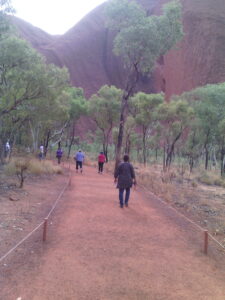
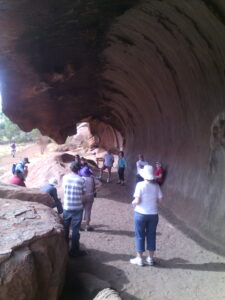
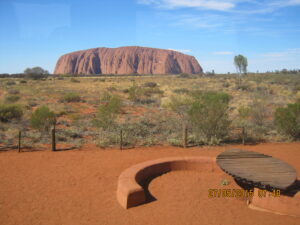


![[ File # csp1188590, License # 2920868 ] Licensed through http://www.canstockphoto.com in accordance with the End User License Agreement (http://www.canstockphoto.com/legal.php) (c) Can Stock Photo Inc. / imagex](http://www.fabfeatures.com/wp-content/uploads/2015/08/Uluru-2-300x200.jpg)
